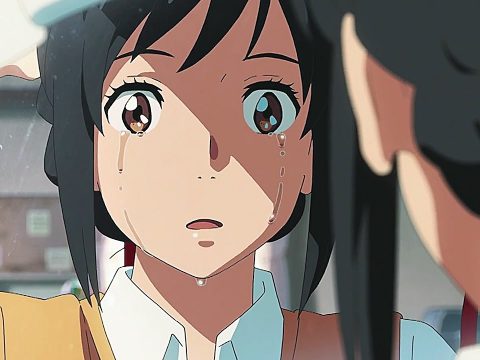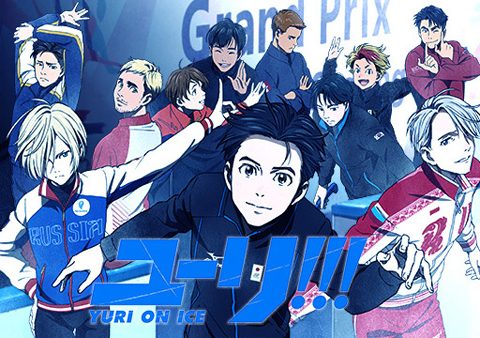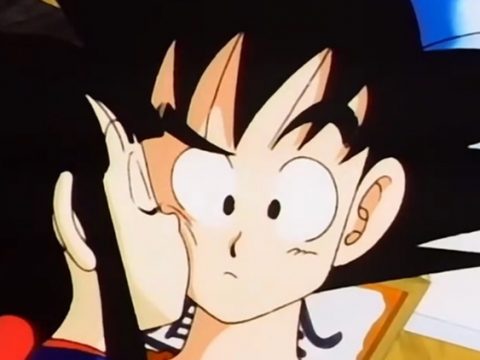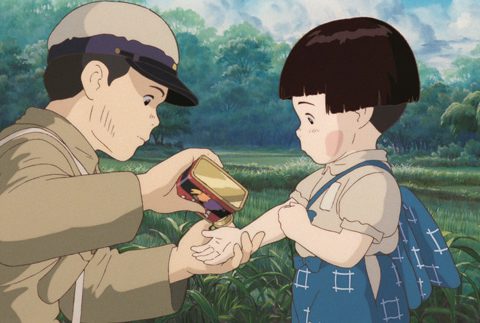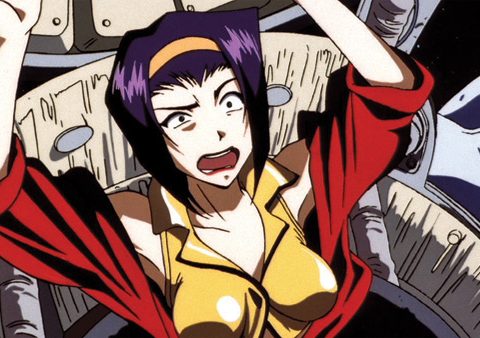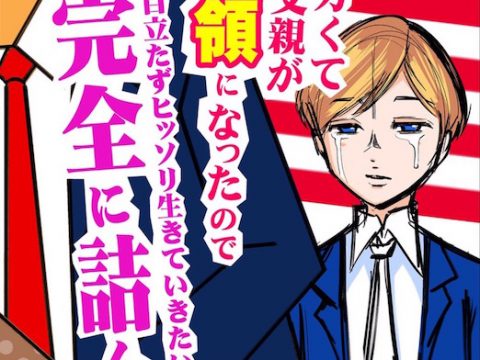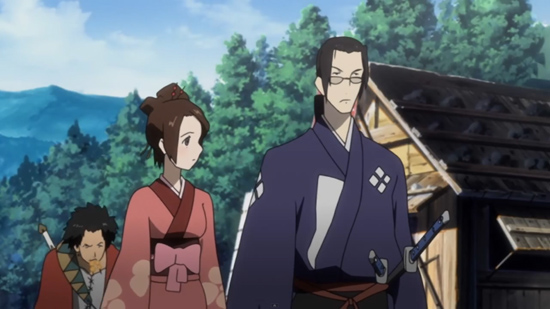
A friend of mine once described the 1998 anime classic Cowboy Bebop as an “anime for people who hate anime.” I suppose in many ways then, Samurai Champloo is an animated samurai film for those who can’t be bothered to check out jidaigeki or “period films.” This is not at all surprising as Champloo was directed by Bebop’s director, Shinichiro Watanabe. This time around, whereas Cowboy Bebop was a sci-fi Western set to jazz, Samurai Champloo is like Akira Kurosawa’s Yojimbo set to the Wu-Tang Clan’s 36 Chambers album ala “The Dark Side of Oz.” The mash-up may seem like the worst concept ever but once it starts up, it works.
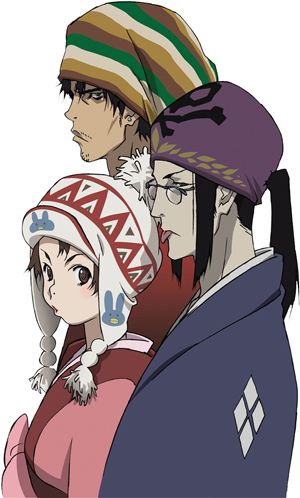
The “champloo” in Samurai Champloo is something of a play on words. It stems from “Chanpur,” a word in the Okinawan dialect that means to mix up or hash. This means that in some weird parallel universe, the same person responsible for releasing Rurouni Kenshin Stateside as Samurai X could have released this as Samurai Remix. (Thankfully, such madness was prevented.) Truthfully though, that is the best way to describe the overall feel of the series. All of the different elements come together and add a distinct flavor to what could have been just thrown aside as Cowboy Bebop 2 … which you could sort of say it is in some ways….Tell you what? I’ll get back to that in a bit.
If this is indeed in the spirit of all those old samurai films and TV shows, right around this point, we’d cue the dramatic narrator: It is the Edo Period! A time of change in Japan! HOWEVER! Vagrants and corruption run rampant across the land! Into the arena of history step three strangers, united by fate! Even now, their journey to save—OK, I’m going a bit overboard here. Samurai Champloo IS set in the Edo Period … at least it tries to be. What starts as a scuffle at a restaurant turns into a trial by fire (literally) for the drifter known as Mugen and the wandering samurai, Jin. As bad luck would have it, the two of them in their own way managed to tick off a corrupt official AND accidentally kill his only son. Before their heads are put up on the chopping block, they are saved by Fuu, a young girl with a proposition: be her bodyguards as she searches for a samurai who “smells of sunflowers.” Going only on this vague description, the three of them set off to try and find him … if they don’t kill each other first.
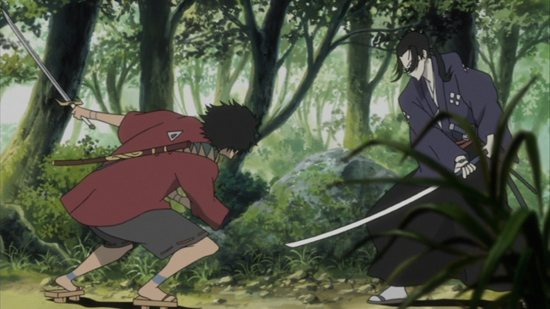
Now, back to the Bebop predispositions! How could Samurai Champloo be Cowboy Bebop 2? Is it Bebop 2, for that matter? There are some similarities in theme but believe it or not, a bulk of the similarities are strange coincidences. For instance, aside from the obvious note of Shinichiro Watanabe directing, Champloo originally ended at around Episode 17 during it’s initial broadcast run. Even stranger is that both shows had the same 26-episode count even with the episode split! Also, said “finale” consisted of a two-parter that focused on the pasts of both Jin and Fuu. Jupiter Jazz, anyone? What about the main cast? A group of misfits with their cute pet mascot who are broke most of the time, the leading female character being the most materialistic one of the bunch. To top all of that, 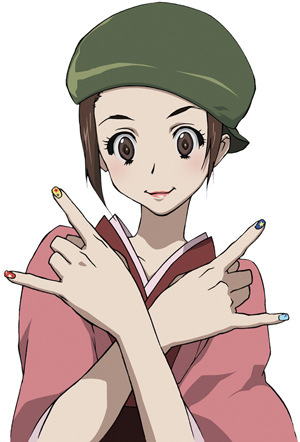 the voice actor for Jet Black plays a recurring role! Thankfully enough, if you’re thinking that this series is as bad as say Dancouga Nova with its being a secret third season of Gravion (Don’t try to lie, Masami Ohbari! We know the truth!), think again. I’d go so far as to say that this is less of a redux and more like a spiritual successor. Even then, you could attribute the majority of this to Watanabe’s directing style .. .or the effects of the Hadron Collider reaching back into the past, but I severely digress. At the same time, there’s another series that people like to stack this against:
the voice actor for Jet Black plays a recurring role! Thankfully enough, if you’re thinking that this series is as bad as say Dancouga Nova with its being a secret third season of Gravion (Don’t try to lie, Masami Ohbari! We know the truth!), think again. I’d go so far as to say that this is less of a redux and more like a spiritual successor. Even then, you could attribute the majority of this to Watanabe’s directing style .. .or the effects of the Hadron Collider reaching back into the past, but I severely digress. At the same time, there’s another series that people like to stack this against:
Afro Samurai.
I can’t remember exactly who said it, but I recall somebody once making the claim that Afro Samurai was a truer fusion of hip-hop and anime than Samurai Champloo. There is something to be said as Champloo’s hip-hop vibes tend to be a bit more subtle and downplayed at times. However, when you really look at it, Afro Samurai has something of a tunnel-vision when it comes to the synthesis of two genres. The focus there feels as if it’s more on the stereotypes of hip-hop and less of the music and culture itself, almost batting you over the head with it. Where Champloo truly succeeds and even surpasses Afro is in its diversity. There is a hip-hop base in this series but this mash-up contains hints of Okinawan culture and Japanese history—one element doesn’t dominate the other nor does it rely on a single one. Additionally, the stream of anachronistic gags and pop culture references never gets old and remains fresh throughout; not knowing your Japanese history by heart will not detract from your enjoyment. It’s all complemented by great writing, fluid and amazing animation, and one of the most memorable voice casts I’ve heard to date.
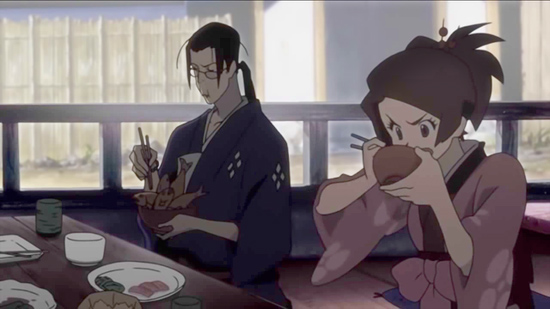
Expanding on the diversity a bit, I believe what best seals the deal with Samurai Champloo is the shitennou or “Four Heavenly Kings” hand-picked by Shinichiro Watanabe himself for the musical score. (If I were a tackier man, I would say that we should call them the Four Beat Kings … but I won’t. Because you’d hate me.) The soundtrack isn’t just the work of one composer, it’s comprised of tracks by shakkazombie’s DJ Tsutchie, Five Deez member fat jon, rap duo FORCE OF NATURE, and nujabes. Each artist brings their own unique hip-hop talents to the table: nujabes with his entrancing cool jazz and acoustic beats; fat joe and his organic blend of house and occasional electronica; FORCE OF NATURE with their hard and gritty drum sections; and Tsutchie’s downplayed mix of techno and percussion. Also entering the fray are vocalists Shing02 and MINMI who sing the opening and ending themes, respectively. Both themes in my book are the finishing touches, the ultimate hook that reels you into this show. All together, the collaborative efforts add a vibrant and moving atmosphere to each episode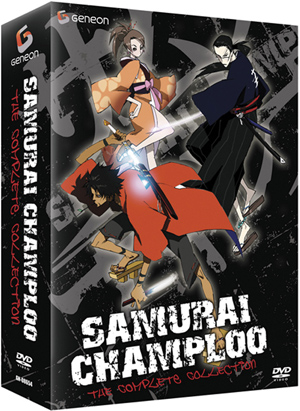 .
.
At the risk of sounding like blatant product placement, I for one am glad that FUNimation came out and gave us a complete collection of Samurai Champloo. With the demise of Geneon, I was getting worried as to whether or not I’d ever be able to actually own it, let alone see it again. Bebop Redux accusations and beefs with Afro aside, now that a second chance has presented itself, you’d be foolish in not checking this series out. Don’t let any prejudices about hip-hop sway you away from this one! In fact, I’d go so far as to say that this is hip-hop-fueled anime done right, a samurai action mix tape that you’ll find yourself jiving with throughout. (Yes, I used “jive” in a sentence; I’m bringing it back.)
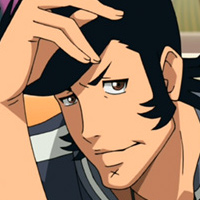
Related Stories:
– Cowboy Bebop is anime’s White Album
– Terror in Resonance Real-Life Location Photos
– Space Dandy is Forever, Baby!
– Patrick Seitz: The Space Dandy Interview
– Cowboy Bebop: Reflections on a Modern-Day Anime Relic


